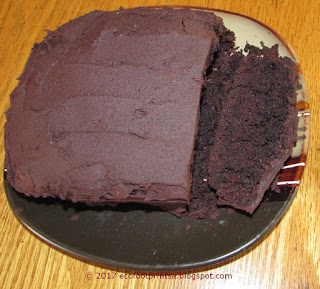In answering Sue's comment, I started going off on a climate change / global warming tangent, which was a whole other post. So, I cut myself short, and thought I would share in this posting exactly what was going on in my head as I replied to her then.
My main summer crops are tomatoes - which get eaten fresh, and get canned, dried and pureed for use in winter - and butternut / squash and pumpkin (to a lesser degree as we prefer the taste of butternut). My main winter crop is peas, fava (broad) beans and swiss chard. Onions / garlic get planted close to whatever else is growing and they seem to thrive all year round.
But, as I have three veggies beds, and I question whether I need all three? I reckon it would be more effective to start planning for less water availability and therefore condense my veggie growing requirements down to two beds. Even thpugh the mulch he;[s tremendously, I need to improve / decrease my water consumption, in order to be more water-wise and to save "wasting" water.
Yes, our local co-op, and supermarkets have a plethora of different seeds to encourage us to buy more, grow more and spend more. But, I have been asking myself if this is wise?
Why do I plant up huge areas of vegetables - more than we can eat - and, if I'm honest, more than I can preserve - so I end up giving them - away albeit to our kids, which is one of the reasons I grow them anyway. All I am doing is forcing myself to irrigate bigger and bigger areas.
 |
Precious heirloom tomatoes - my summer garden is incomplete
without them |
The vegetable / fruit crops which are vital to me are:
Summer:
tomatoes - heirloom rather than cocktail sized - and my most valuable crop
capsicum (red / yellow and piquante peppers)
sweet potatoes
pumpkin and butternut
rocket, herbs and chives (I l-o-v-e rocket and often have more rocket than lettuce in the salad)
Winter:
greens (and dark red) - beetroot
legumes - specifically peas and broad beans
onions and garlic
All year:
carrots
swiss chard
Fruits
Summer:
strawberries
youngberries
apricot
plum
apple
granadilla (passion fruit)
Winter:
none
All year:
lemons
I have discovered that trying to grow lettuce in summer is a no-no as it's far too hot here and they bolt in no time at all - even in my shade cloth veggie patch. Ditto, I have been unsuccessful in growing cauliflower, cabbage and broccoli (the latter for which RMan is extremely thankful as he's not mad about "green trees"). I tried growing cabbage in my small hydroponic set up, and they didn't perform too well. Actually, I can't say anything grew amazingly in it, so, I am converting that hydroponic option to strawberries this year. Let's see how they do...? So, I am definitely not bothering trying to grow any of these veg / salads again.
 |
Peppers - three different kinds - with chopped swiss chard
and onion - ready to get added to a stir fry |
A regional government representative unexpectedly dropped in a couple of years ago - they were doing a survey into what we ate / grew in our area. They asked our casual labourer when last he had dark greens and orange vegetables. He couldn't remember. She said he must try and eat them as they contain vital nutrients required by his body.
But, I had never given that a thought, and that gave me a wake up call. And from that moment on I ensure that he has both of those coloured veggies with his lunch every time he's here - roughly 1 - 2 a week.
But, I had never thought of that in our terms either. And, it has guided me from then on.
Companion plants to tomatoes are carrots, onion, garlic (and strawberries) - so that is one summer bed filled. Carrots are a two-fold veg - we love them smothered in honey butter, and, grated, in a coleslaw - or for the alpacas (and chickens) who love them even more than we do 😂 Two (or should that be three) birds sorted with one stone, so to speak.
 |
| Yum - homemade coleslaw |
Beetroot, peas, broad beans and swiss chard (spinach) are their own companions and they also enjoy the company of onions and garlic. That is another bed - and in winter only.
The pumpkin and butternut are all by themselves in the deep raised beds of composted alpaca poo.
 |
| Dehydrating heirloom tomatoes |
And only sweet potatoes are the odd man out - so they'll get their own bed. I leave them in the ground as our soil never freezes and it is the best way of storing them - and keeps them mouse nibble free. As I need them, so I harvest exactly what I need. And, what I haven't harvested, grows again the next season.
With this downsize plan, as we have irrigation on each of the three veggie patches, which we can isolate as required, this will be a breeze.
This makes a whole bunch of sense to me and will, hopefully, save on the watering - and the angst of a failed crop due to excessive summer temperatures.














